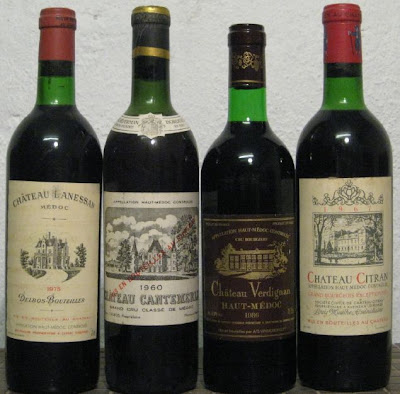
2003 Unlike in the rest of France, this was not a drought year. In fact, precipitation levels were slightly above average. However, as in other French wine regions, 2003 was a very hot and sunny vintage, with exceptional ripeness. Exceptionally, acidification was permitted, but although initial concerns about low acid musts were widespread, relatively few producers bothered to add acid. This is a great Bordeaux vintage, with good to superb wines produced throughout the region, but favoring the Right Bank and improving the further north the vineyards are in the classic communal appellations of the Médoc. The most concentrated wines will be quite exotic and flamboyant. Great Sauternes were also produced.
2002 Hyped-up immediately after the vintage, when the wines were tasted the following spring, this vintage turned out to be far more variable than anyone had imagined. Essentially, it is a Cabernet year, not Merlot, thus some very high-quality Médocs were produced, particularly in, but not restricted to, Pauillac. The further up the cru classé scale you go, the better the wines are, with Lafite a match for the greatest wines of any Bordeaux vintage. Excellent for Sauternes too.
2001 But for the outstanding 2000 vintage, everyone would have been hyping that of 2001 as one of Bordeaux’s finest vintages
across the board. Homogeneity (relevant to the intrinsic quality of the château, of course) is almost as widespread as in 2000, but the quality, although excellent, is not as great as that special year, while the style is more elegant, less concentrated. Another superb Sauternes vintage, and some of the best dry white cru classé wines produced in 10 years.
2000 God forgave the bordelais their transgressions and excesses of the recent past, and smiled on the world’s foremost red wine
region for the last vintage of the old millennium. He held back the rains until almost everyone had brought their harvest in. The reds on both banks are beautifully colored, high in alcohol, with the weight and plumpness of a truly great year. This is a very special vintage indeed, producing wines of extraordinary concentration, except in Sauternes and Barsac, which were hit by rain during their late harvests—the results are not that bad, with quality equaling that of 1999.
1999 This is the year when almost everything that could go wrong did go wrong in
Bordeaux. It was as if the last vintage of the1990s was a testament to the climatic difficulties that masked this decade, with disease in the vineyards, rain at harvest, and ahuge crop of unripe grapes. Very patchy, but most of the best wines were made in St.Émilion, with some excellent Margaux and St.Julien, and some Sauternes that can vie with the 1998s, though not the 1997s. It is in vintages such as 1999 that the difference in quality between Bordeaux as a whole and that found when tasting at the top 100 or so Bordeaux estates becomes so marked.




















